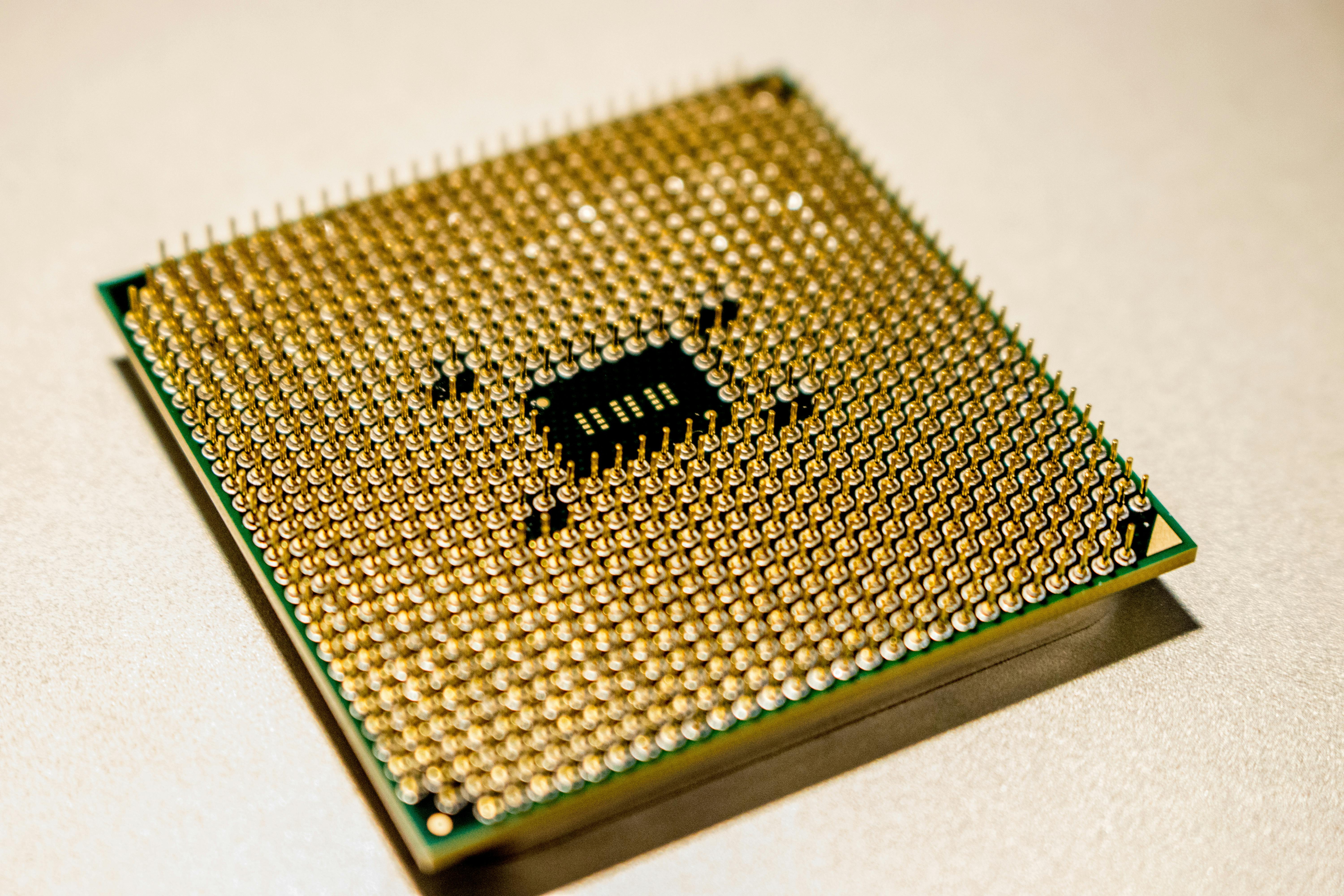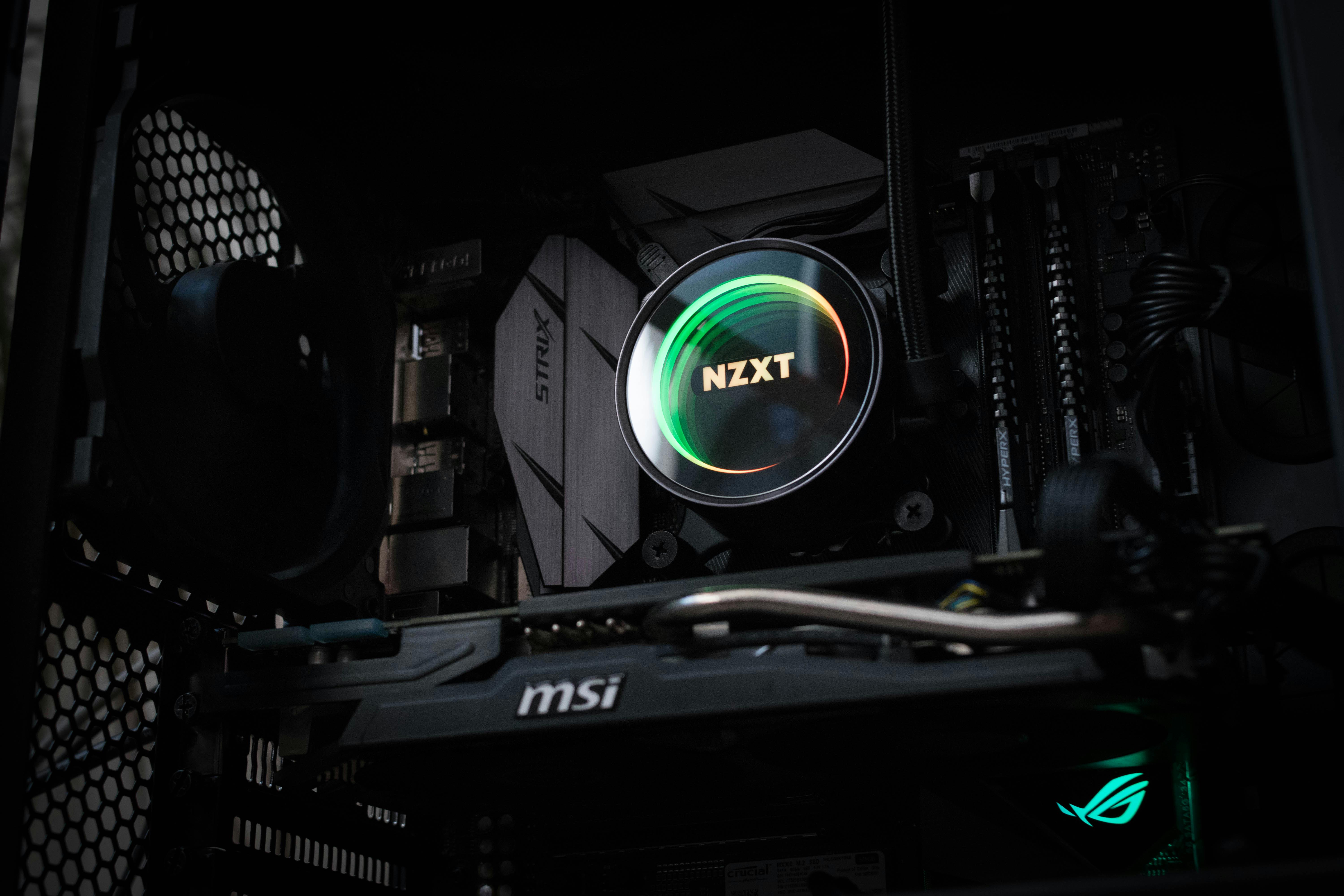Are you ready to unlock your PC’s full potential with Windows 11 performance tune-up tips? In this article, we explore effective strategies that can significantly enhance your system’s speed and efficiency. Whether you’re a gamer, a professional, or just someone who wants their computer to run smoother, these tips are designed to help you optimize your Windows 11 experience. Many users don’t realize that a few simple adjustments can lead to significant improvements in performance.
From managing startup programs to adjusting graphics settings, every tweak counts! Have you ever wondered why your PC feels sluggish? You’re not alone. Many Windows 11 users face this issue, but with the right performance optimization techniques, you can breathe new life into your machine. We’ll dive into practical methods that don’t require advanced technical skills, making it accessible for everyone.
In the following sections, we’ll cover essential tools and settings that can make a world of difference. You’ll learn how to effectively free up disk space, enhance your system responsiveness, and even improve gaming performance. Are you curious about the best practices for Windows 11 performance? Stay tuned, because we’re about to reveal insider secrets that can transform your computing experience from mundane to magnificent! So, if you’re ready to embark on a journey to turbocharge your Windows 11, let’s get started with these essential performance tune-up tips!
10 Proven Windows 11 Performance Tune-Up Tips to Supercharge Your PC Speed Today

Are you tired of your PC dragging its feet on Windows 11? Well, you’re in luck! There are several effective ways to give your system the boost it needs. Here, we present 10 proven Windows 11 performance tune-up tips to supercharge your PC speed today. Each tip is designed to help unlock your PC’s full potential, making your computing experience smoother and more enjoyable.
1. Disable Unnecessary Startup Programs
When you start your computer, many programs want to load up automatically. This can slow down your startup time significantly. You can manage these by opening the Task Manager, going to the Startup tab, and disabling programs that you don’t need right away.
2. Adjust Visual Effects
Windows 11 comes with a lot of fancy graphics and animations, which can take up resources. To improve performance, you can go to System Properties, click on the Advanced tab, and then on Performance Settings. Here you can choose to adjust for best performance, which will turn off many of those eye-candy effects.
3. Regular Disk Cleanup
Over time, your hard drive can get cluttered with temporary files and system caches. Use the built-in Disk Cleanup tool to regularly clear these out. You can find it by searching “Disk Cleanup” in the start menu. Just select the drive you want to clean and follow the prompts.
4. Update Your Drivers
Keeping your drivers up to date is essential for optimal performance. Outdated drivers may cause slowdowns and crashes. You can update them manually through the Device Manager or use dedicated driver update software to automate the process.
5. Optimize Your Storage
If you are using a traditional HDD, consider upgrading to an SSD. Solid State Drives are significantly faster and can drastically improve boot and load times. If you’re not ready to upgrade, make sure your existing storage isn’t too full. Aim to keep at least 15% free space for optimal performance.
6. Manage Background Applications
Some applications run in the background, consuming resources even when you’re not using them. You can manage these by going to Settings > Privacy & Security > Background Apps. Disable apps that don’t need to run all the time.
7. Use Power Settings Wisely
Your computer’s power settings affect its performance. In the Control Panel, look for Power Options and select the High Performance plan. This will ensure that your PC is using all available resources when needed.
8. Uninstall Bloatware
Many new computers come loaded with unnecessary software, often called bloatware. Take time to uninstall these applications that you never use. This can free up valuable space and resources.
9. Scan for Malware
Malware can significantly degrade your system’s performance. Use Windows Defender or a trusted antivirus software to perform a full system scan. Remove any threats that might be slowing down your PC.
10. Restart Your PC Regularly
It may sound simple, but regularly restarting your PC can resolve many issues. This clears out memory leaks, closes background processes, and generally refreshes the system.
By implementing these Windows 11 performance tune-up tips, you can unlock your PC’s full potential and get it running like new again. Remember, keeping your system in good shape is an ongoing process. Regular maintenance can save you a lot of hassle in the long run. So, don’t wait; start supercharging your PC speed today!
Is Your Windows 11 Slowing Down? 7 Essential Tune-Up Techniques You Must Try

Is your Windows 11 slowing down? You’re not alone. Many users experience performance issues as they navigate through the features of this latest operating system. Sluggishness can be frustrating, but it doesn’t have to be permanent. Here are seven essential tune-up techniques that can help unlock your PC’s full potential and breathe new life into your Windows 11 experience.
1. Disable Startup Programs
When your computer boots up, there’s a slew of programs that can launch automatically. Each of these programs can slow down your start time and hog resources. To manage this, press Ctrl + Shift + Esc to open Task Manager. Click on the “Startup” tab, and you can see which applications are set to launch at startup. Disable the ones that you don’t need right away. This should help your system boot up faster.
2. Update Your Drivers
Outdated drivers can cause performance issues, and Windows 11 is no exception. To check if your drivers is up to date, go to “Device Manager” by right-clicking on the Start button. Expand each category, right-click your devices, and select “Update driver.” This small step can significantly enhance your system’s performance.
3. Adjust Visual Effects
Windows 11 comes with many visual effects that may look good, but they can slow down your PC. To adjust these settings, right-click on the Start menu, select “System,” then click on “Advanced system settings.” Under the “Performance” section, click “Settings,” and choose “Adjust for best performance.” This will disable many of those eye-candy features and may speed things up.
4. Clean Up Disk Space
Having too many files can bog down your system. Use the built-in Disk Cleanup tool to free up space. Search for “Disk Cleanup” in the Start menu, and select the drive you want to clean. This tool will show you how much space you can recover by deleting temporary files, system files, and more. Regularly doing this can keep your system running smoothly.
5. Uninstall Unused Apps
Over time, you may have installed apps that you rarely or never use. These apps can consume valuable system resources. Go to “Settings,” then “Apps,” and review your installed programs. Uninstall those that you don’t need anymore. This not only frees up space but also reduces background processes.
6. Use Windows Troubleshooter
Windows 11 has a built-in troubleshooter that can help diagnose and fix issues automatically. Go to “Settings,” select “System,” then “Troubleshoot,” and click on “Other troubleshooters.” Run the recommended troubleshooters for performance issues. This tool can identify problems you might not even be aware of.
7. Optimize Your Power Settings
Power settings can greatly influence performance. If your PC is set to “Power saver,” it may be limiting its performance. Go to “Settings,” then “System,” and click on “Power & battery.” Set your power mode to “Best performance” to ensure your system is working at its full potential, especially if you’re using a desktop.
Final Thoughts
No one wants their computer to be slow, especially when Windows 11 has so much to offer. By implementing these seven tune-up techniques, you can improve performance and enjoy a smoother experience. From disabling unnecessary startup programs to optimizing power settings, each of these steps can make a noticeable difference. Remember to regularly maintain your system for the best results, and you’ll find that keeping your Windows 11 running optimally is totally achievable.
Maximize Productivity: 5 Hidden Windows 11 Features for an Instant Performance Boost

Are you tired of your computer running slow when you need it to perform at its best? Well, if your using Windows 11, there’s many hidden features that can help you maximize productivity without needing to be a tech expert. These features are like little gems waiting to be discovered on your PC. In this article, we explore five of these features and give you some Windows 11 performance tune-up tips to unlock your PC’s full potential.
1. Snap Layouts and Snap Groups
Windows 11 bring a new way to multitask with Snap Layouts and Snap Groups. This feature lets you organize your open windows in a way that makes it easier to focus on your tasks. You can hover over the maximize button on any window to see the layout options. Just drag the window to where you want it, and it snap into place. Once you’ve set up a layout, Windows remember it as a Snap Group, so you can quickly return to your work setup.
- Benefits:
- Reduces clutter on your desktop.
- Improves your workflow by organizing tasks visually.
2. Virtual Desktops
Virtual desktops has been enhanced in Windows 11. It allows you to create multiple desktops for different purposes. Maybe one for work and another for personal use. Switching between them is seamless. To create a new desktop, click on the Task View button or press Windows Key + Tab. Then, you can click “New Desktop”.
- Tips:
- Name your desktops for easy identification.
- Use different wallpapers to differentiate between them.
3. Focus Sessions
If distractions always gets in the way of your productivity, Focus Sessions can help. This feature is integrated with the Clock app and allows you to set specific times for focused work. You can even link it with your Spotify account to play your favorite tunes while you work.
- Key Features:
- Set timers for work and break intervals.
- Track your progress to stay motivated.
4. Storage Sense
Keeping your storage clean is crucial for performance. Windows 11 includes Storage Sense, which automatically frees up space by removing unnecessary files. This feature runs in the background and can be configured to delete temporary files and manage your Recycle Bin.
- How to Enable:
- Go to Settings > System > Storage.
- Toggle on Storage Sense and configure the settings according to your needs.
5. DirectStorage
Gaming on Windows 11 got a performance boost with DirectStorage, which allows games to load much faster. It uses the full capabilities of NVMe SSDs to load assets directly into the graphics card. So, if you are into gaming, this is a must-have feature that greatly enhance the experience.
- Benefits:
- Reduces loading times significantly.
- Enhances visual quality in supported games.
Windows 11 Performance Tune-Up Tips
Maximizing productivity also means tuning up your system for the best performance. Here are some quick tips:
- Keep Windows Updated: Always install the latest updates for security and performance enhancements.
- Disable Startup Programs: Limit the programs that start at boot time to speed up startup.
- Run Disk Cleanup: Regularly perform disk cleanup to remove unnecessary files.
- Adjust Visual Effects: Go to System Properties and adjust for best performance.
By utilizing these hidden features and tips, you can really unlock your PC’s full potential. Windows 11 offers tools that can transform how you work and play. It’s all about discovering what works best for you and implementing these strategies into your daily routine. With a little effort, you can enjoy a smoother, more productive computing experience.
Unlock the Secrets: How to Optimize Windows 11 for Gaming Performance with These 8 Tips

Are you ready to take your gaming experience on Windows 11 to the next level? Many gamers are looking for ways to optimize their systems, but sometimes they don’t know where to start. Unlock the secrets to achieving peak performance with these 8 tips that can help you maximize your gaming potential. Say goodbye to lag and hello to fluid gameplay!
Tip 1: Update Your Drivers Regularly
Keeping your graphics card drivers up to date is crucial. Outdated drivers can lead to performance issues and reduced game quality. Make sure you check your GPU manufacturer’s website, such as NVIDIA or AMD, for the latest updates. Additionally, Windows Update can help keep other system drivers current.
Tip 2: Enable Game Mode
Windows 11 comes with a built-in Game Mode that helps prioritize gaming performance. When you enable Game Mode, it optimizes your PC’s resources and minimizes background processes. You can find this setting in the Gaming section of the Windows Settings. Just toggle it on, and you’re set.
Tip 3: Adjust Visual Effects
Windows 11 has many visual effects that can eat up system resources. To improve gaming performance, you can adjust these settings. Go to System Properties, click on Performance Settings, and choose “Adjust for best performance.” This will disable unnecessary animations and effects, resulting in improved game speed.
Tip 4: Manage Background Applications
Many programs running in the background can slow down your gaming experience. Before you start playing, it is smart to close any unnecessary applications. You can do this by using the Task Manager. Right-click the taskbar, select Task Manager, and end tasks that you don’t need, especially resource-heavy ones.
Tip 5: Optimize Storage
An overloaded hard drive can slow down your system. Regularly clean up your storage by removing unnecessary files and programs. Use the built-in Disk Cleanup tool or third-party cleaning software to help. Consider upgrading to an SSD if you haven’t already, as they provide faster load times compared to traditional HDDs.
Tip 6: Monitor Temperature
High temperatures can lead to thermal throttling, which negatively affects performance. Use software like HWMonitor or MSI Afterburner to keep an eye on your CPU and GPU temperatures. If it’s getting too hot, consider cleaning dust from your case or upgrading your cooling system to maintain optimal temperatures.
Tip 7: Adjust Power Settings
Setting your power plan to “High Performance” can make a significant difference. Go to Control Panel > Power Options and change your plan to High Performance. This setting prevents your computer from throttling performance to save energy, ensuring that you get the maximum power during your gaming sessions.
Tip 8: Use DirectStorage
One of the newest features in Windows 11 is DirectStorage, which significantly improves game load times. To take advantage of this, ensure that you have an NVMe SSD and that your games are installed on it. This technology allows games to load assets directly to the GPU, improving overall performance.
By following these Windows 11 performance tune-up tips, you can unlock your PC’s full potential and enjoy a smoother gaming experience. Whether you’re playing the latest AAA titles or indulging in indie gems, optimizing your system is essential. It’s amazing how small adjustments can lead to big differences in gaming performance. So, dive into these tips and watch your gaming sessions transform!
Are You Using These 6 Windows 11 Tune-Up Tools? Enhance Speed and Efficiency Instantly!

Are you feeling like your Windows 11 computer is slower than molasses? You’re not alone! Many users find that their system performance can lag over time. Luckily, there’s a solution! With the right tune-up tools, you can instantly enhance speed and efficiency of your PC. In this article, we’ll explore six essential Windows 11 tune-up tools that could unlock your PC’s full potential and keep it running smoothly.
1. Disk Cleanup
Did you know that unnecessary files can pile up on your computer like clutter in a closet? Disk Cleanup is a built-in Windows tool that helps you reclaim valuable space. It removes temporary files, system files, and other junk that you don’t need anymore. To use it, just search for “Disk Cleanup” in the start menu, select the drive you want to clean, and follow the prompts. Regularly using this tool can lead to significant improvements in speed.
2. CCleaner
CCleaner is one of the most popular third-party tools for cleaning up your Windows 11 system. It not only clears out junk files but also manages your startup programs, which can greatly affect your boot time. The free version is pretty powerful, but the paid version has even more features. CCleaner can help you keep your system optimized without much effort. Just be careful with the settings, as it can delete more than you expect if you’re not paying attention!
3. Windows Security
You might not think about it, but security can impact your system’s performance. Windows Security comes pre-installed in Windows 11 and it offers real-time protection against viruses and malware. Keeping your PC safe means it runs better, because it won’t be bogged down by harmful software. Make sure to keep it updated and perform regular scans for the best results.
4. Advanced SystemCare
This tool is like a Swiss Army knife for Windows optimization. Advanced SystemCare offers features like junk file cleaning, registry fixing, and even internet speed boosting. It has a free version, but the Pro version unlocks more powerful features. Users often report noticeable improvements in their system’s performance after using this tool.
5. Performance Monitor
Windows 11 has a built-in tool called Performance Monitor that can help you identify what’s slowing down your system. It gives you detailed reports about your computer’s performance, including CPU usage, memory usage, and disk activity. You can access it by typing “Performance Monitor” in the search bar. This tool is great for tech-savvy users who want to dig deeper into their system’s performance.
6. Driver Booster
Outdated drivers can lead to performance issues and even system crashes. Driver Booster helps you keep all your drivers updated. It scans your system and provides a list of outdated drivers, allowing you to update them with just a few clicks. Regularly updating your drivers can lead to better hardware performance and fewer errors.
Quick Tips for Better Windows 11 Performance
- Regularly check for Windows updates: Keeping your OS up to date ensures you have the latest features and security patches.
- Limit startup programs: Disable unnecessary programs from starting up with your PC. This can dramatically reduce boot times.
- Keep your desktop clean: A cluttered desktop can slow your system down. Try to limit the number of icons and shortcuts.
- Use SSDs instead of HDDs: If you’re still using an HDD, consider upgrading to an SSD for improved performance.
By utilizing these six Windows 11 tune-up tools, you can enhance your computer’s speed and efficiency in no time. Don’t let a sluggish PC ruin your productivity. Embrace these tips and tools to unlock your system’s full potential.
Conclusion
In summary, optimizing your Windows 11 performance can significantly enhance your computing experience. By implementing simple yet effective strategies such as disabling unnecessary startup programs, adjusting power settings, regularly updating drivers, and utilizing built-in tools like Disk Cleanup and Storage Sense, you can ensure your system runs smoothly and efficiently. Additionally, considering hardware upgrades, such as increasing RAM or switching to an SSD, can provide substantial improvements for demanding applications. Regular maintenance, including system scans and keeping your software updated, is crucial for sustaining performance over time. As you apply these tips, you’ll not only enjoy a faster, more responsive system but also prolong the lifespan of your device. Don’t wait for your computer to slow down; take action today and transform your Windows 11 experience for the better!

